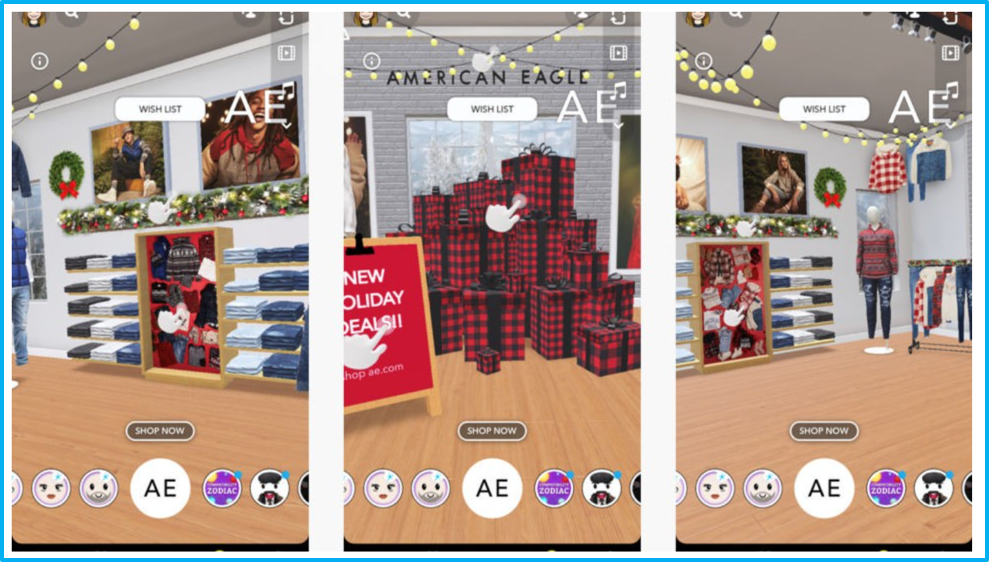The Immersive Omnichannel
The Future of Advertising and Commerce lies on XR powered Immersive Experiences.

XR|3D – We are at a tipping point for immersive experiences in digital commerce. The pandemic is reinventing buying behaviors. Immersive technologies are maturing. Powerful brands and media platform giants are investing. Consumers are energized. And the advent of 5G supports richer digital content. Brands that wait will fall behind competitors—and consumer expectations.
The COVID-19 pandemic has greatly accelerated consumers’ need to interact with one another, with products, with information and with entertainment – remotely, in a more immersive way.
Now it looks like new digital tools and new immersive technologies like AR and VR, visual search or AI-powered virtual assistants are going to be adopted much faster, starting to really gain traction in 2021, with the projected mass launch of several types of AR glasses and the proliferation of 5G.

Combining XR measurements, XR programming and Biometrics, we can capture Adaptive User-Centric Experiences.
Anywhere/Anytime – Is the New Black !
Cautious about germs, crowds and travel, consumers think twice before going to a store. This mindset cause a sudden change in behavior and modifies the nature of interactions between brands and consumers. So product interaction, brand interaction, impulse buys have to be delivered anywhere, anytime. Expanding the definition of omnichannel to fully include immersive technologies like AR and VR, delivered seamlessly through AI-powered applications.
Consumers need to try-on, try-out or at least feel like they can interact with products virtually – from make-up, to shoes, to cars, to clothing, to furniture.
42% Experiencing products before purchasing
They need to step into a brand’s world and get a sense for what it represents without walking into a perfectly set up flagship store.
Brands have also clearly identified their needs. When it comes to future purchasing decisions, only immersive experiences are growing in influence.
Consumers want to shop online without sacrificing purchasing confidence. With immersive experiences, they don’t have to
Consider consumers’ top motivations for trying out immersive technologies when shopping online.
A recent Accenture study points out that 47% of consumers say that immersive tech makes them feel connected with products and that they would pay extra for a product if they could customize it or personalize.
Their motivations for trying out immersive technologies when shopping online include:
52% Viewing products without visiting the store

Consumer want to shop online without sacrificing purchasing confidence. With immersive experiences, they don’t have to. (Accenture interactive 2020 Immersive XP survey)
42% experiencing products before purchasing

When Dior uses augmented reality to try its B27 sneakers on Snapchat, customers love it *! (*ROAS x6.2 Snap Inc France)
AR and VR are merging on Social Media and Gaming Platforms.
A new competitive landscape and digital partner ecosystem is emerging.
Large experience-led consumer platforms like Snapchat, Facebook, Epic, Niantic, Apple, Steam seem to be perfectly positioned to create the future of digital consumer interaction, expanding from their leadership in gaming, entertainment and communication.
These platforms can rely on:
- Their large user base
- The social interactions and the influencers
- The integration of AR/VR elements
- Their proprietary game engines or AR development tools
- A pre-established integration with eCommerce and payment systems
- A library of 3D assets, created or crowd-sourced
- The partnerships with infrastructure players for heavy content distribution
- An established developer ecosystem
- Access to users’ behavioral data
XR Commerce – whole in one XP shopping and ads.
The real transformative future of commerce and advertising is not just based on adding AI enabled AR/VR functionality to an old and tried list of products.

Nike Configurator
But in truly bringing shopping and ads inside any experience that a user might be immersed in.
Creating realistic 3D models is a time-consuming, manual, and expensive process that few companies can afford.

AI+XR Omnichannel
Today scans take a 1-minute video to complete, do not require technical knowledge or special hardware, and are processed and highly-compressed in the cloud using cutting-edge AI-based technology.
Those solutions allow online businesses and marketers to create high-quality 3D models of products easily.
Today, they already work with leading fashion brands and e-commerce platforms.



